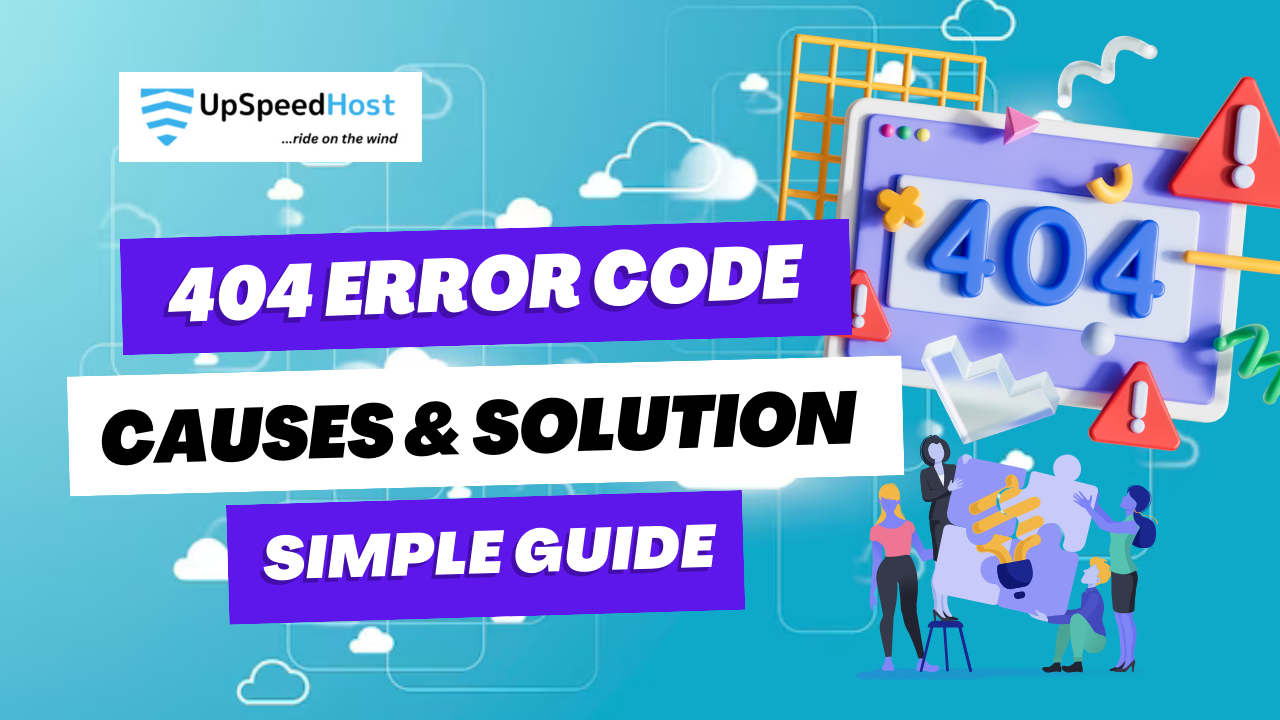Have you ever tried to visit a website and seen a 404 error code? If so, you’re not alone. 404 errors are one of the most common errors that web users encounter. But what exactly is a 404 error, and what can you do to fix it?
In this article, we’ll take a comprehensive look at 404 errors, including what they are, what causes them, and how to fix them. We’ll also discuss some tips for preventing 404 errors from happening in the first place.

What is a 404 Error Code?
A 404 error code is a standard HTTP status code that means that the server could not find the requested page. This can happen for a number of reasons, such as: the page has been deleted or moved, the user has typed in the wrong URL, the server is experiencing technical difficulties, and the user’s browser is not properly configured.
What Causes 404 Errors?
Here are some of the most common causes of 404 errors:
- Deleted or moved pages: If a page has been deleted or moved, but the old URL is still being linked to, users will see a 404 error when they try to visit that page.
- Incorrect URLs: If a user types in the wrong URL, such as misspelling the domain name or forgetting a hyphen, they will see a 404 error.
- Server problems: If the server is experiencing technical difficulties, such as a high volume of traffic or a software bug, it may not be able to deliver the requested page, resulting in a 404 error.
- Browser problems: If the user’s browser is not properly configured, such as having the wrong DNS settings, it may not be able to connect to the server or find the requested page, resulting in a 404 error.
How to Fix 404 Error Code
There are a number of ways to fix 404 error code, depending on the cause of the error.
1. Troubleshooting Plugins
If you’re using WordPress, one of the first things you should check is your plugins. Some plugins can cause 404 errors, especially if they are not properly configured or updated.
To troubleshoot your plugins, try disabling them one by one and see if that fixes the 404 error. If it does, then you know that one of your plugins is the problem. You can then try contacting the plugin developer for help or find a different plugin to replace it.
2. Switching SIMs
Another possible solution to 404 errors is to switch SIMs. Some SIM cards can give bad IPs sometimes, which can cause 404 errors. If you’re having trouble fixing a 404 error, try switching to a different SIM card and see if that fixes the problem.
Other Solutions to 404 Errors
If you’re still having trouble fixing your 404 errors, here are a few other things you can try:
3. Redirecting Broken Links
If you know of any broken links on your website, you can redirect them to working pages. This will help to prevent users from seeing 404 errors.
To redirect a broken link, you can use a .htaccess file or a WordPress plugin. There are a number of tutorials available online that can show you how to do this.
4. Creating Custom 404 Pages
Instead of displaying a generic 404 error page, you can create a custom 404 page that provides more information to users and helps them to find the content they’re looking for.
Your custom 404 page should include a brief explanation of what a 404 error is and why the user is seeing it. It should also include links to other pages on your website, such as your homepage, search bar, and contact page.
5. Updating Your Site’s Robots.txt File
If you have pages on your website that you don’t want to be indexed by search engines, you can add them to your robots.txt file. This will help to prevent search engines from crawling and indexing these pages, which can reduce the number of 404 errors that your website generates.
To update your robots.txt file, you’ll need to log into your website’s FTP server and open the robots.txt file in a text editor. Once you have the file open, add the following lines to the bottom of the file:
User-agent: *
Disallow: /path/to/blocked/page
Replace /path/to/blocked/page with the URL of the page that you want to block.
Once you’ve added the lines to the robots.txt file, save the file and upload it back to your website’s FTP server.
Wrapping Up
404 error code are a common problem on the web, but there are a number of things you can do to fix them. By troubleshooting plugins, switching SIMs, redirecting broken links, creating custom 404 pages, and updating your site’s robots.txt file, you can reduce the number of 404 errors that your website generates and improve the user experience.
We hope this article has helped you to understand what a 404 error code is, what causes it, and how to fix it. If you have any further questions, please feel free to leave a comment below.


1 Comment
Your article helped me a lot, is there any more related content? Thanks!